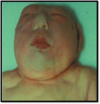Embryo-1 Flashcards
(32 cards)
The 16-cell stage makes what?
Morula
Fertilization occurs where and is the most common site of an ectopic pregnancy?
ampulla
The secondary oocyte has a ________ that makes the oocyte distinguished
antrum
Sperm releases acrosomal enzymes upon touching what structure?
Zona Pellucida
syncytiotrophoblast and cytotrophoblast are made from what?
trophoblasts
What is the average length of pregnancy?
37-42 weeks
Proliferative phase is days 6-14, it is under influence of __________
estrogen, proliferation of endometrium, formation of glands/arteries
Oocyte are formed during the fifth month of fetal development and remain dormant in what cell phase?
Prophase I of meiosis
Menstrual phase is days 1-5, causes an increase of what?
blood, bleeding
After the pronuclei are formed, two individual cells make _________ which are totipotent
blastomeres
What is the process where different layers are removed from the head of the sperm?
Capacitation
What layer of the oocyte prevents polyspermy, premature implantation, disintegration of cleaving embryo?
Zona Pellucida
Organogenesis happens during weeks _________, in the embroyonic period
3-8
Before the embryo implants into the posterior superior wall, what must be shed?
Zona pellucida
Spermatogonia -> __________ -> spermatids
spermatocytes
Where are primordial germ cells formed?
Epiblast
Zona Pellucida allows nutrients to reach cleaving embryo and causes _________ development
Blastocyst
Spermatogonia moves through what process to make type A and type B spermatogonia?
Mitosis
Ovulation is caused by an increase of what?
LH
Secretory phase is under the influence of __________
progesterone, arteries and glands enlarge
During what process do primordial germ cells move through the primitive streak?
Gastrulation, eventually settle in the yolk sac
Blastomeres undergo compaction after 8-cell stage, that make what two pieces?
trophoblasts-> make the placenta embryoblasts -> inner cell mass
Spermatocytogensis is what process?
Spermatogonia to spermatids
The corpus luteum degenerates due to the lack of what of hormone?
Progesterone







